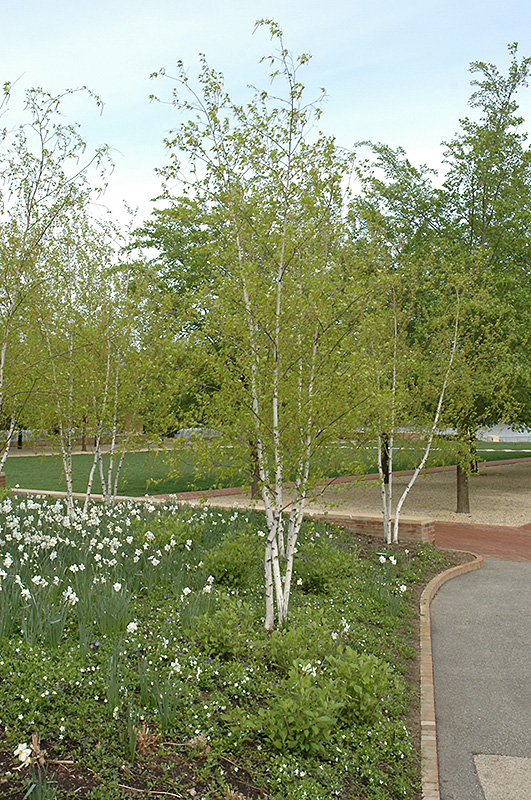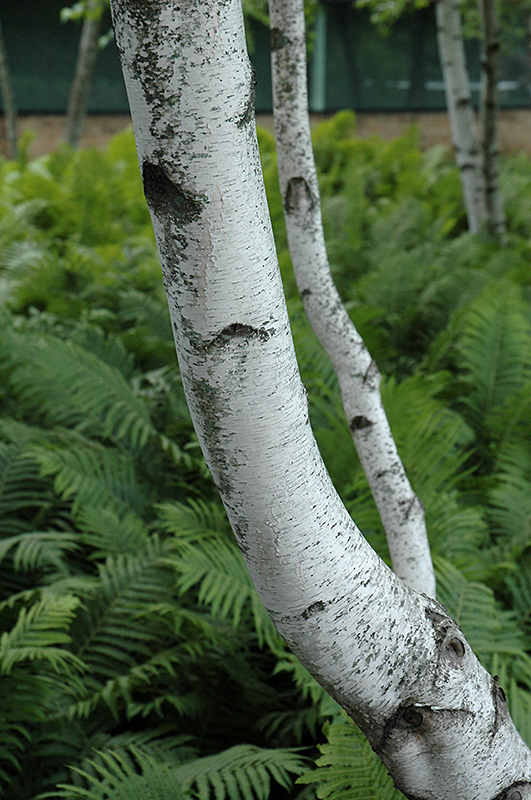Plant Finder
Whitespire Senior Birch
Betula populifolia 'Whitespire Senior'

Whitespire Senior Birch in spring
Whitespire Senior Birch in spring
(Photo courtesy of NetPS Plant Finder)
Height: 40 feet
Spread: 25 feet
Sunlight:
![]()
Hardiness Zone: 4
Other Names: Betula platyphylla
Description:
Attractive gray-white bark with black markings, doesn't exfoliate; glossy green leaves and lovely fall color, moderate resistance to bronze birch borer; a clonally-propagated version of 'Whitespire' birch
Ornamental Features
Whitespire Senior Birch has dark green deciduous foliage on a tree with a pyramidal habit of growth. The glossy round leaves turn an outstanding yellow in the fall. The smooth white bark is extremely showy and adds significant winter interest.
Landscape Attributes
Whitespire Senior Birch is a deciduous tree with a distinctive and refined pyramidal form. Its average texture blends into the landscape, but can be balanced by one or two finer or coarser trees or shrubs for an effective composition.
This is a relatively low maintenance tree, and should only be pruned in summer after the leaves have fully developed, as it may 'bleed' sap if pruned in late winter or early spring. Deer don't particularly care for this plant and will usually leave it alone in favor of tastier treats. Gardeners should be aware of the following characteristic(s) that may warrant special consideration;
- Insects
Whitespire Senior Birch is recommended for the following landscape applications;
- Accent
- Shade
Planting & Growing
Whitespire Senior Birch will grow to be about 40 feet tall at maturity, with a spread of 25 feet. It has a low canopy with a typical clearance of 5 feet from the ground, and should not be planted underneath power lines. It grows at a medium rate, and under ideal conditions can be expected to live for 50 years or more.
This tree should only be grown in full sunlight. It prefers to grow in average to moist conditions, and shouldn't be allowed to dry out. It is not particular as to soil type or pH. It is somewhat tolerant of urban pollution. Consider applying a thick mulch around the root zone in winter to protect it in exposed locations or colder microclimates. This is a selection of a native North American species.
A NetPS Plant Finder tool

